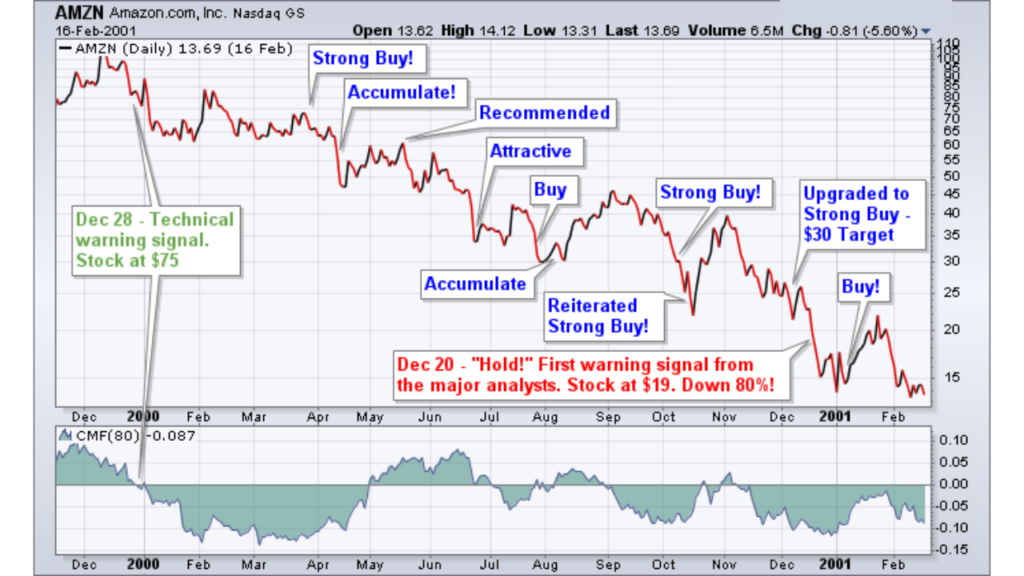Strengths of Fundamental Analysis
Long-term Trends
For long-term investments based on extremely long-term patterns, fundamental analysis works well. Patient investors who choose the appropriate sector groups or companies can gain from the ability to see and forecast long-term changes in the economy, population, technology, or consumer behavior.
Value Spotting
Finding businesses that offer high value will be made easier with the aid of sound basic analysis. Some of the most renowned investors have a long-term and value-oriented perspective. John Neff, Warren Buffett, and Graham and Dodd are regarded as value investing evangelists. Companies with significant assets, a solid balance sheet, consistent earnings, and longevity can be found with the aid of fundamental research.
Business Acumen
One of the most obvious, but less tangible, rewards of fundamental analysis is the development of a thorough understanding of the business. After such painstaking research and analysis, an investor will be familiar with the key revenue and profit drivers behind a company. Earnings and earnings expectations can be potent drivers of equity prices. Even some technical analysts will agree to that. A good understanding can help investors avoid companies that are prone to shortfalls and identify those that continue to deliver.
In addition to understanding the business, fundamental analysis allows investors to develop an understanding of the key value drivers and companies within an industry. A stock’s price is heavily influenced by its industry group. By studying these groups, investors can better position themselves to identify opportunities that are high-risk (tech), low-risk (utilities), growth-oriented (computer), value-driven (oil), non-cyclical (consumer staples), cyclical (transportation) or income-oriented (high yield).
Knowing Who’s Who
Stocks move as a group. By understanding a company’s business, investors can better position themselves to categorize stocks within their relevant industry group. Business can change rapidly and with it the revenue mix of a company. This happened to many of the pure Internet retailers, which were not really Internet companies, but plain retailers. Knowing a company’s business and being able to place it in a group can make a huge difference in relative valuations.
Weaknesses of Fundamental Analysis
Time Constraints
Although fundamental analysis might be incredibly time-consuming, it can provide good insights. Extensive models frequently yield valuations that are at odds with the current Wall Street pricing. When this occurs, the analyst essentially asserts that the entire street is mistaken. While there are undoubtedly misunderstood businesses in the world, it seems bold to suggest that Wall Street and the market price are mistaken.
Industry/Company Specific
Depending on the industry category and the particulars of each business, different valuation procedures are used. Because of this, different businesses and industries need different approaches and models. This can take a lot of time, which may restrict the quantity of research that can be done. An oil company is unlikely to be best valued using a subscription-based model, however it would be ideal for an Internet service provider (ISP).
Subjectivity
Assumptions are the basis of fair value. The final valuation can be significantly changed by any adjustments to the growth or multiplier assumptions. Most fundamental analysts are aware of this and give a base-case, average-case, and worst-case valuation using sensitivity analysis. Nonetheless, the majority of models are nearly always bullish, even on the worst-case value; the only question is to what extent. Many fundamental analysts can be doggedly bullish, as the figure below illustrates.

Amazon.com, Inc. (AMZN) Fundamental Analysis example chart from StockCharts.com
Analyst Bias
Most of the information in the analysis comes from the company itself. Companies employ investor relations managers specifically to handle the analyst community and release information. As Mark Twain said, “There are lies, damn lies, and statistics.” When it comes to massaging the data or spinning the announcement, CFOs and investor relations managers are professionals.
Only buy-side analysts tend to venture past the company statistics. Buy-side analysts work for mutual funds and money managers. They read the reports written by the sell-side analysts who work for the big brokers. These brokers are also involved in underwriting and investment banking for the companies.
Even though there are restrictions to prevent a conflict of interest, brokers have an ongoing relationship with the company under analysis. When reading these reports, it is important to consider any biases a sell-side analyst may have. On the other hand, the buy-side analyst analyzes the company purely from an investment standpoint for a portfolio manager. If there is a relationship with the company, it is usually on different terms. In some cases, this may be as a large shareholder.
Definition of Fair Value
When market valuations extend beyond historical norms, there is pressure to adjust growth and multiplier assumptions to compensate. If Wall Street values a stock at 50 times earnings and the current assumption is 30 times, the analyst would be pressured to revise this assumption higher. There is an old Wall Street adage: the value of any asset (stock) is only what someone is willing to pay for it (current price). Just as stock prices fluctuate, so too do growth and multiplier assumptions. Are we to believe Wall Street and the stock price or the analyst and market assumptions?
It used to be that free cash flow or earnings were used with a multiplier to arrive at a fair value. In 1999, the S&P 500 typically sold for 28 times free cash flow. However, because so many companies were and are losing money, it has become popular to value a business as a multiple of its revenues. This would seem to be OK, except that the multiple was higher than the PE of many stocks! Some companies were considered bargains at 30 times revenues.



